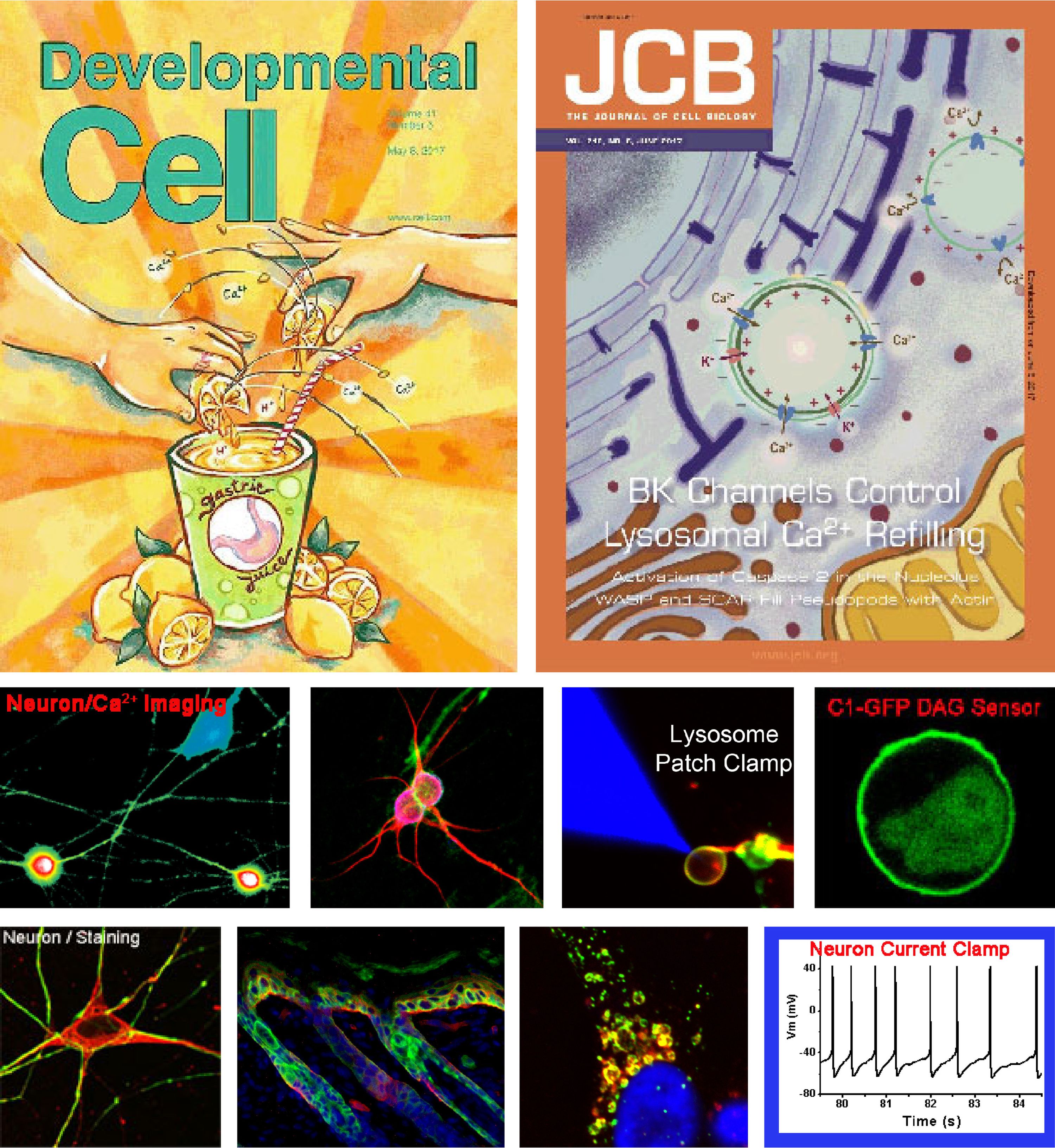
Our research has mainly focused on ion channels in the lysosome.
We use an integrative approach with state-of-art techniques including molecular biology, bioinformatics, biochemistry, immunochemistry, electrophysiology, fluorescence imaging, spinning-disk confocal microscopy, and mouse genetics. Currently our research is mainly focused on ion channels in the lysosome.
Lysosomes are acidic compartments filled with more than 60 different types of hydrolases. They mediate the degradation of extracellular particles from endocytosis and of intracellular components from autophagy. The digested products are transported out of the lysosome via specific catabolite exporters or via vesicular membrane trafficking. Lysosomes also contain more than 50 membrane proteins and are equipped with the machinery to sense nutrient availability, which determines the distribution, number, size, and activity of lysosomes to control the specificity of cargo flux and timing (the initiation and termination) of degradation. Defects in degradation, export, or trafficking result in lysosomal dysfunction and lysosomal storage diseases (LSDs). Lysosomal channels and transporters mediate ion flux across perimeter membranes to regulate lysosomal ion homeostasis, membrane potential, catabolite export, membrane trafficking, and nutrient sensing. Dysregulation of lysosomal channels underlies the pathogenesis of many LSDs and possibly that of metabolic and common neurodegenerative diseases.
In order to study ion channels in the lysosome, we have recently developed a modified patch-clamp technique to directly record lysosomal membranes, and also established a fluorescence imaging method to specifically measure lysosomal Ca(2+) release using lysosome-targeted Genetically-Encoded Ca(2+) Indicators, such as GCaMP3. Using these approaches, we were able to "open" the gate to the "black box" of the cell’s recycling center and discovered several novel ion channels in the lysosome. We are currently characterizing these new lysosome channels and investigating their cell biological functions.
In particular, we found that the mucolipin TRP (TRPML) proteins encode Ca(2+) release channels in the membranes of intracellular endosomes and lysosomes. Mutations of human TRPML1 cause type IV mucolipidosis (ML4), a rare but devastating neurodegenerative disease in young children. ML4 patients exhibit motor defects, mental retardation, and retinal degeneration. Using TRPML KO and transgenic mice , and with the aid of small molecule TRPML agonists and inhibitors that we have recently identified, we are currently studying the activation mechanisms and in vivo functions of TRPMLs.
